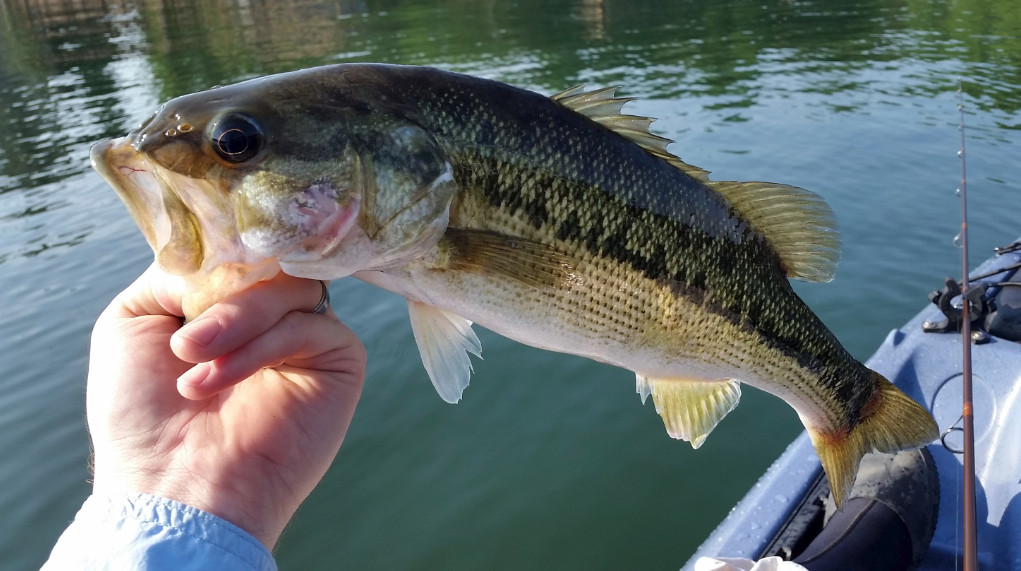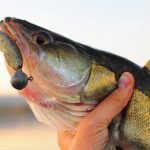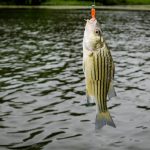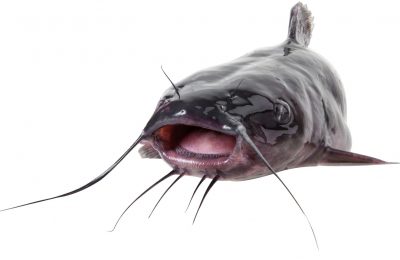The Difference Between a Spotted Bass and Largemouth Bass
Spotted bass may not really be bass, but don’t tell serious fishermen that fact. Known as spotty, or simply spots, these feisty fish can be found from the Mississippi Basin through the Gulf States and all the way to the Florida Panhandle.
Spots are actually a member of the sunfish family, also known as Micropterus Punctulatus. Like the other two members of the black bass family, the Kentucky spotted bass and the spotted black bass, they can be found far outside their normal habitat.
While they may often be overlooked by anglers who are intent on largemouth or smallmouth bass, this fun to catch fish should be on every fisher’s list. So, how to tell these from the others?
There are some specific differences between spotted bass and their famous cousins. The difference between a spotted bass and largemouth bass is difficult to see if the angler doesn’t know what to look for in the physical aspects when it comes to: jaw length; dorsal fin; tongue; cheek scales; and stomach markers.
In particular, the fish can’t be differentiated on the usual criteria of stripes, spots, or colors. So, when angling for bass instead of spots, or the other way around, here’s what you need to know.
The Difference Between a Spotted Bass and Largemouth Bass
One of the primary differences between spotted bass and largemouth is that largemouth bass are generally bigger than spotties. Still, there are a few basics that every angler should understand.
Dorsal Fin & Stomach Markers
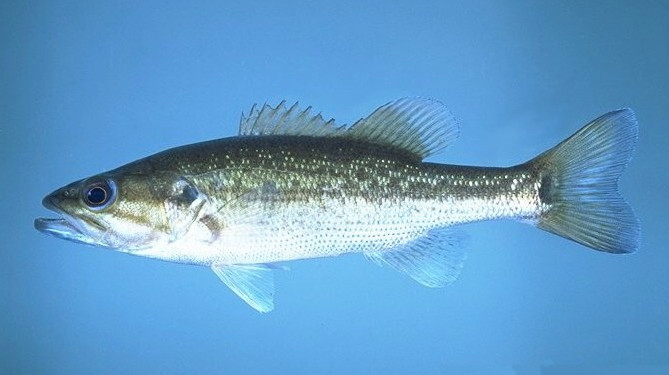 The spotted bass has a top dorsal fin that is clearly connected, while the largemouth bass has an almost separated fin. Spotted bass have stomach markers made up of lines of spots along the stomach. Largemouth bass have a plain white stomach.
The spotted bass has a top dorsal fin that is clearly connected, while the largemouth bass has an almost separated fin. Spotted bass have stomach markers made up of lines of spots along the stomach. Largemouth bass have a plain white stomach.
Tongue & Cheek Scales
The spotted bass has a rectangular rough patch on its tongue. Largemouth bass do not. The cheek scales on a spotted bass are much smaller than the rest of the scales on their body as opposed to largemouth bass who have identically sized scales.
Protected Black Bass
An important part of this identification process is to ensure those species of protected black bass are not over fished.
While there are many different types of bass, the nine black bass species make up all the spotted bass as well as largemouth and smallmouth bass. Many of these fish live in the southern part of the United States, with a large number in Texas.
As such, Texas is working hard to protect the spotted bass habitat and ensure there is public awareness to practice catch and release techniques. With a wide distribution of spotted bass throughout the south, conservationists are intent on keeping the supply of sport fish available.
Black Bass Identification Guide – Know, Then Go, Then Show
Smallmouth, Largemouth, Yellow, Spotted, Striped, White, Hybrid. The types of bass and their habitats can seem overwhelming, especially to a novice angler. Luckily, several state and private fishing organizations have created information charts for identification.
Get the Right Fishing Gear for the Right Catch
For the sport angler, knowing the fish also means being able to target the right gear for the right catch.
For example, largemouth bass will rush and jump at surface lures while spotties will grab the hook and dive deep. This makes the largemouth more of a dynamic hit but the spotties more of a fighter. Find out about some of the recommended bass lures for anglers today.
Spotted bass are schooling fish, whereas largemouth is solitary. In addition, spotties, unlike many other fish, are not picky eaters. These guys will eat just about anything that crosses their path. That’s good to know when picking out gear.
If you need more help, check out this great article comparison, too.
Any angler that wants to show off a trophy sized catch needs to know what gear to use for each type of bass. For spots, the choices are simple.
- Finesse worms, about 3-inches long, are some of the best go-to lures for spots. They are inexpensive, easy to set up with a Texas rig and are reliable for hits.
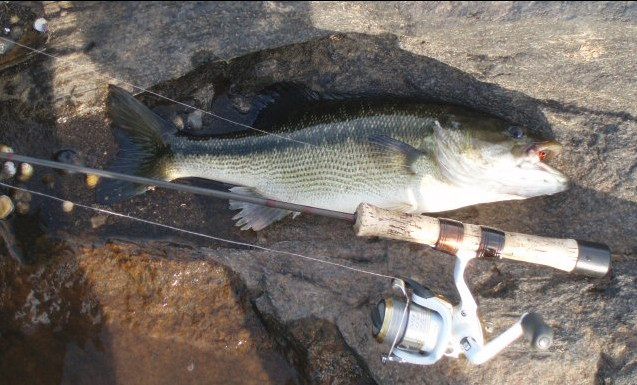
- Senko and straight tail worms are also reliable spotty bait.
- A football jig is a great choice for spotties, as it allows the angler to use a lighter weight line without risking lost catches. The big, bulky presentation draws spotties in and guarantees a solid strike with a good set of the hook.
- Walking bait is a great way to bring spots to the line instead of the other way around. Traditional spook lures should be in every bass angler’s tackle box. The professionals suggest a chartreuse color for the most reliable hits.
- Finally, swimbaits are a great, all-around lure and should be an addition for anyone looking to spend a day fishing for spots. Just make sure the bait isn’t too big or too small.
- Go small, and there’s no drawing power. Go too big and the bait overpowers the catch. Those who use swimbaits regularly suggest a 6-inch lure.
Free Fishing Gear Choices Are Simple – Free Is For Me!
Now that the type of gear is clear, trying your hand by entering the latest giveaway is simple. That’s because here at the Rusty Angler, we believe in fishing giveaways, fishing sweepstakes, and fishing promotions.
Look for a good fishing giveaway to land some free swag. For larger, more expensive gear, fishing sweeps are a great way to score free high end gear.
One of the best areas to investigate is the world of fishing promotions. Companies have fishing promotions all the time specifically to attract new buyers or to highlight new products.
Often, companies will offer free gear by having the angler use a fishing promotion code when ordering new equipment. Why is that important? Well, that means you can get gear at either greatly reduced prices—or even free.
In addition, use of the fishing code will often produce offers for reduced gear, reduced tackle, and even free testing of new lures and kits.
A good fishing contest will result in similar giveaways and often allow anglers to win free fishing gear just by doing what is already being done – finding great deals.
Those fish are out there and they sure aren’t going to catch themselves. Time to spot the deal and then catch some spotted bass.


